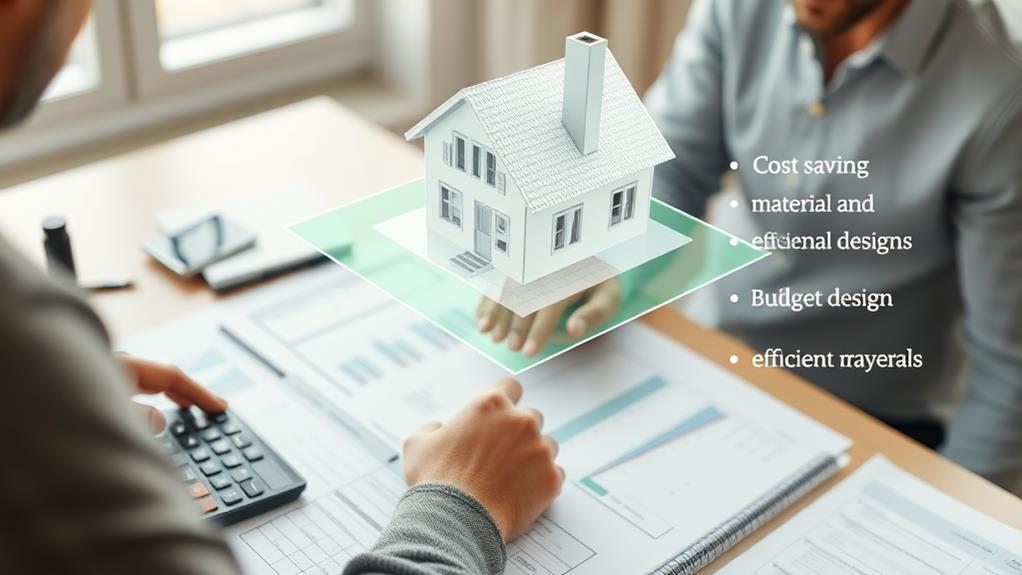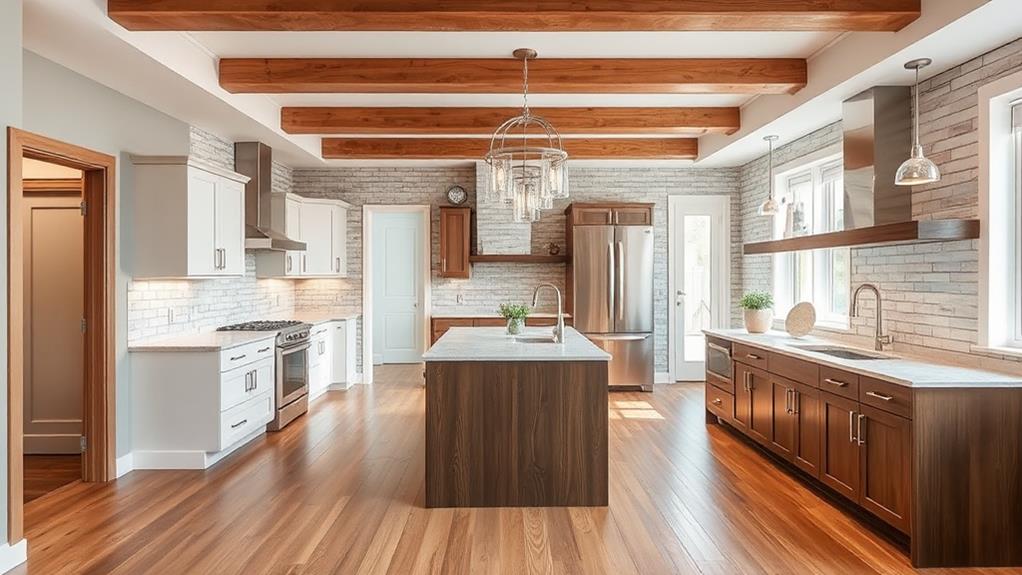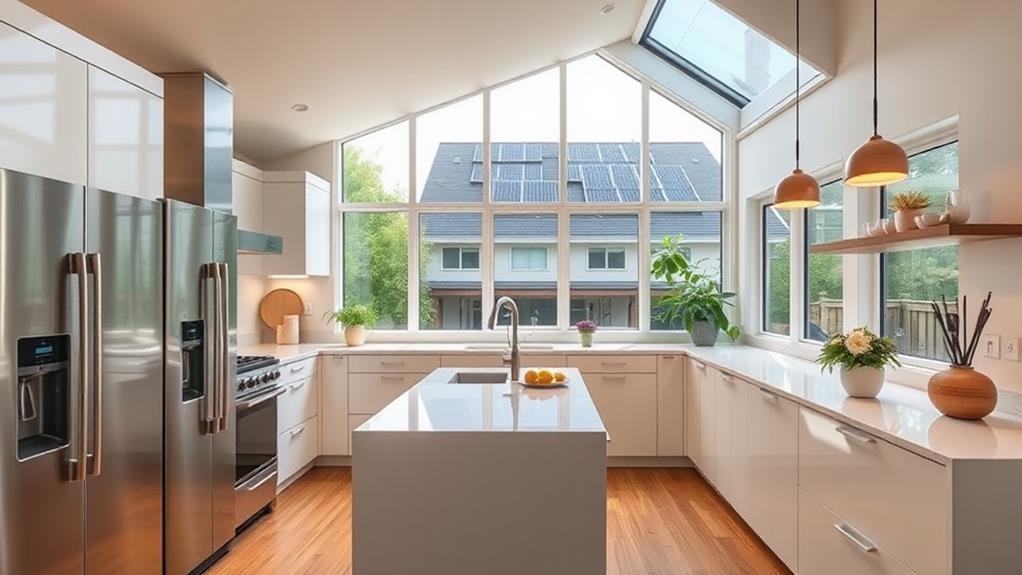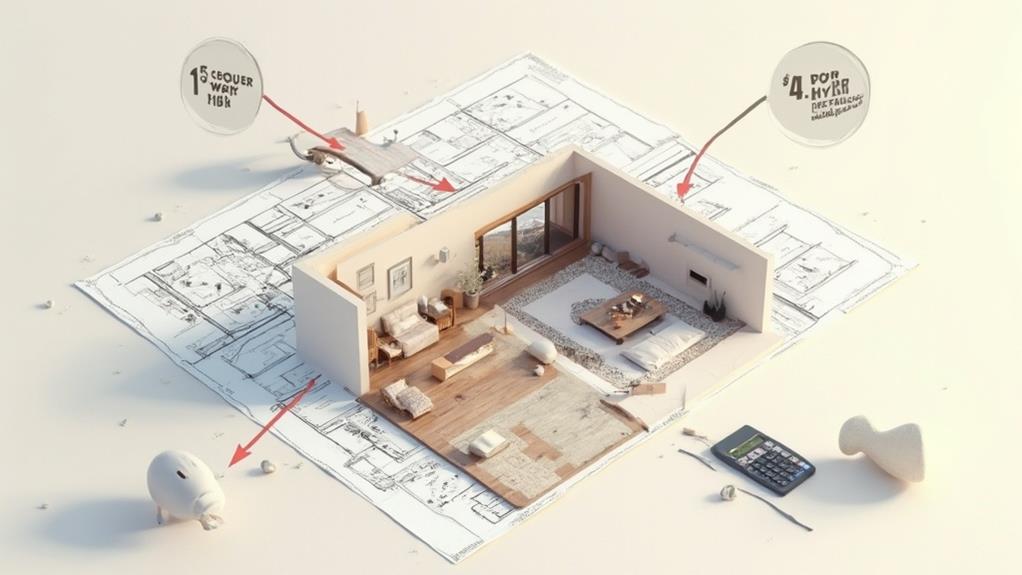Value engineering is a strategic approach to maximize functionality while minimizing costs in renovation projects. It involves analyzing components, exploring alternatives, and prioritizing essential features. By assessing renovation priorities, homeowners can categorize improvements and focus on high-return investments. Cost-effective material alternatives, such as luxury vinyl plank flooring or quartz countertops, can significantly reduce expenses. Optimizing space and layout through smart design choices can enhance functionality without major construction. Energy-efficient strategies, like improved insulation and LED lighting, offer long-term savings. By applying value engineering principles, homeowners can stretch their renovation budget further and achieve optimal results. Discover how to implement these techniques for a successful home improvement project.
Understanding Value Engineering

When considering renovation projects on a budget, understanding value engineering is crucial. This systematic approach aims to maximize functionality while minimizing costs, ensuring that every dollar spent contributes to the project's overall value. Value engineering involves analyzing each component of the renovation to determine its necessity, purpose, and cost-effectiveness.
The process begins by identifying the primary functions of each element in the renovation plan. Designers and contractors then explore alternative materials, methods, or designs that can achieve the same functions at a lower cost without compromising quality. This may involve substituting expensive materials with more affordable options, simplifying complex designs, or finding innovative solutions that serve multiple purposes.
Value engineering also considers long-term costs, such as maintenance and energy efficiency, to ensure that cost-cutting measures don't lead to higher expenses in the future. By prioritizing essential features and eliminating unnecessary elements, homeowners can allocate their budget more effectively. This approach often results in a more streamlined, efficient renovation that meets the project's goals while staying within financial constraints. Ultimately, value engineering helps homeowners achieve the best possible outcome for their investment.
Assessing Your Renovation Priorities
Before embarking on a budget-friendly renovation, it's essential to assess your priorities carefully. Start by listing all desired improvements and categorizing them into "must-haves," "nice-to-haves," and "if-budget-allows" items. Consider both functional and aesthetic aspects, focusing on changes that will significantly impact your daily life or property value.
Evaluate the current condition of your home, identifying areas that require immediate attention due to safety concerns, structural issues, or outdated systems. These should typically take precedence over purely cosmetic upgrades. Next, consider your long-term plans for the property. If you intend to sell soon, prioritize renovations that offer the highest return on investment, such as kitchen and bathroom updates or energy-efficient improvements.
Assess your budget realistically, factoring in a contingency fund for unexpected issues. Research cost estimates for each item on your list to help rank priorities within your financial constraints. Don't forget to consider the potential disruption and timeline of each renovation task, balancing your desire for improvements with practical considerations like living arrangements during the project.
Cost-Effective Material Alternatives

Selecting cost-effective material alternatives is crucial for renovating on a budget without compromising quality or aesthetics. By exploring various options, homeowners can achieve their desired look while significantly reducing costs.
For flooring, consider luxury vinyl plank (LVP) instead of hardwood. LVP offers durability, water resistance, and a wide range of wood-like appearances at a fraction of the cost.
In kitchens, opt for quartz countertops over granite; they're more affordable, require less maintenance, and offer similar visual appeal. For backsplashes, ceramic tiles provide a cost-effective alternative to pricier materials like glass or natural stone.
When it comes to cabinetry, consider refacing existing cabinets or choosing ready-to-assemble (RTA) options instead of custom-built units. For windows, vinyl frames offer energy efficiency and durability at a lower price point than wood or aluminum.
In bathrooms, fiberglass shower surrounds can mimic the look of tile while being easier to install and maintain.
Optimizing Space and Layout
Optimizing space and layout is a critical aspect of budget-friendly renovations that can dramatically improve the functionality and aesthetics of a home without incurring significant costs. By carefully analyzing the existing floor plan and identifying underutilized areas, homeowners can maximize their living space without expanding the building's footprint. This approach often involves removing non-load-bearing walls to create open-concept living areas, which can make a home feel more spacious and modern.
Clever storage solutions play a key role in space optimization. Built-in shelving, under-stair storage, and multi-functional furniture can help reduce clutter and improve organization. Rethinking room usage is another effective strategy. For example, converting a rarely used formal dining room into a home office or playroom can add value without major construction. Additionally, optimizing natural light through strategic window placement or the addition of skylights can create an illusion of more space while reducing energy costs. When redesigning layouts, it's crucial to consider traffic flow and the placement of utilities to minimize expensive plumbing or electrical work. By focusing on these space-saving and layout-enhancing techniques, homeowners can achieve significant improvements within their renovation budget constraints.
Energy-Efficient Design Strategies

Energy-efficient design strategies are essential components of budget-friendly renovations, offering long-term savings on utility costs while improving home comfort. These strategies focus on reducing energy consumption through smart design choices and the incorporation of energy-efficient materials and technologies.
One key approach is improving insulation in walls, floors, and ceilings to minimize heat transfer. This can be achieved using cost-effective materials like fiberglass batts or blown-in cellulose. Additionally, sealing air leaks around windows, doors, and other openings helps maintain desired indoor temperatures with less energy expenditure.
Upgrading to energy-efficient windows and doors can significantly reduce heating and cooling costs. Double-pane or triple-pane windows with low-E coatings provide better insulation than single-pane alternatives. For lighting, LED bulbs and fixtures offer substantial energy savings compared to traditional incandescent options.
Implementing passive solar design principles, such as strategically placing windows and using thermal mass materials, can harness natural heat and light to reduce reliance on artificial heating and cooling systems. Finally, installing programmable thermostats and energy-efficient HVAC systems can optimize energy use based on occupancy patterns and preferences, further reducing utility costs.
DIY Vs Professional Services
When considering renovation projects on a budget, homeowners often face the decision between tackling tasks themselves or hiring professional services. This choice can significantly impact both the cost and quality of the renovation.
DIY approaches can lead to substantial savings, especially for simpler tasks like painting, basic carpentry, or landscaping. Homeowners with skills and time can achieve satisfactory results while reducing labor costs. However, DIY projects may take longer to complete and carry risks of mistakes or subpar workmanship.
Professional services, while more expensive, offer expertise, efficiency, and often warranties. Skilled contractors can handle complex tasks, ensure code compliance, and potentially add more value to the property. They may also have access to better materials at lower costs due to industry connections.
The decision between DIY and professional services should be based on the project's complexity, required skills, time availability, and budget constraints. A balanced approach might involve hiring professionals for critical or specialized work while tackling simpler tasks independently. This strategy can optimize the renovation budget while ensuring quality results in key areas.
Frequently Asked Questions
How Long Does a Typical Value Engineering Process Take for a Renovation Project?
The duration of a typical value engineering process for a renovation project varies depending on its complexity and scope. Generally, it can take anywhere from a few days to several weeks, involving analysis, brainstorming, and evaluation of cost-saving alternatives.
Can Value Engineering Be Applied to Small-Scale Home Improvement Projects?
John saved $500 on his bathroom remodel through value engineering. Yes, value engineering can be applied to small-scale home improvement projects. It helps homeowners identify cost-effective alternatives and prioritize features to maximize their budget and achieve desired outcomes.
Are There Certifications or Qualifications for Value Engineering Specialists in Construction?
Yes, there are certifications for value engineering specialists in construction. The Society of American Value Engineers (SAVE) International offers the Certified Value Specialist (CVS) designation, which is widely recognized in the industry for professional value engineering expertise.
How Does Value Engineering Impact the Overall Timeline of a Renovation Project?
Like a skilled sculptor chiseling away excess marble, value engineering can both streamline and extend a renovation timeline. It may initially add time for analysis and decision-making, but often results in faster execution and fewer costly changes later.
What Software Tools Are Commonly Used in Value Engineering for Renovations?
Common software tools used in value engineering for renovations include BIM (Building Information Modeling) platforms, cost estimation software, project management tools, and analytical programs like PlanSwift, Procore, and Autodesk Revit. These tools facilitate data analysis and decision-making processes.
Conclusion
Value engineering offers a systematic approach to maximize renovation budgets without compromising quality. By prioritizing needs, exploring cost-effective materials, optimizing space utilization, and implementing energy-efficient designs, homeowners can achieve significant savings. Interestingly, studies show that value-engineered renovations can reduce overall project costs by 10-15% on average. Balancing DIY efforts with professional services further enhances cost-effectiveness. Ultimately, value engineering empowers homeowners to create functional, aesthetically pleasing spaces while adhering to financial constraints.

